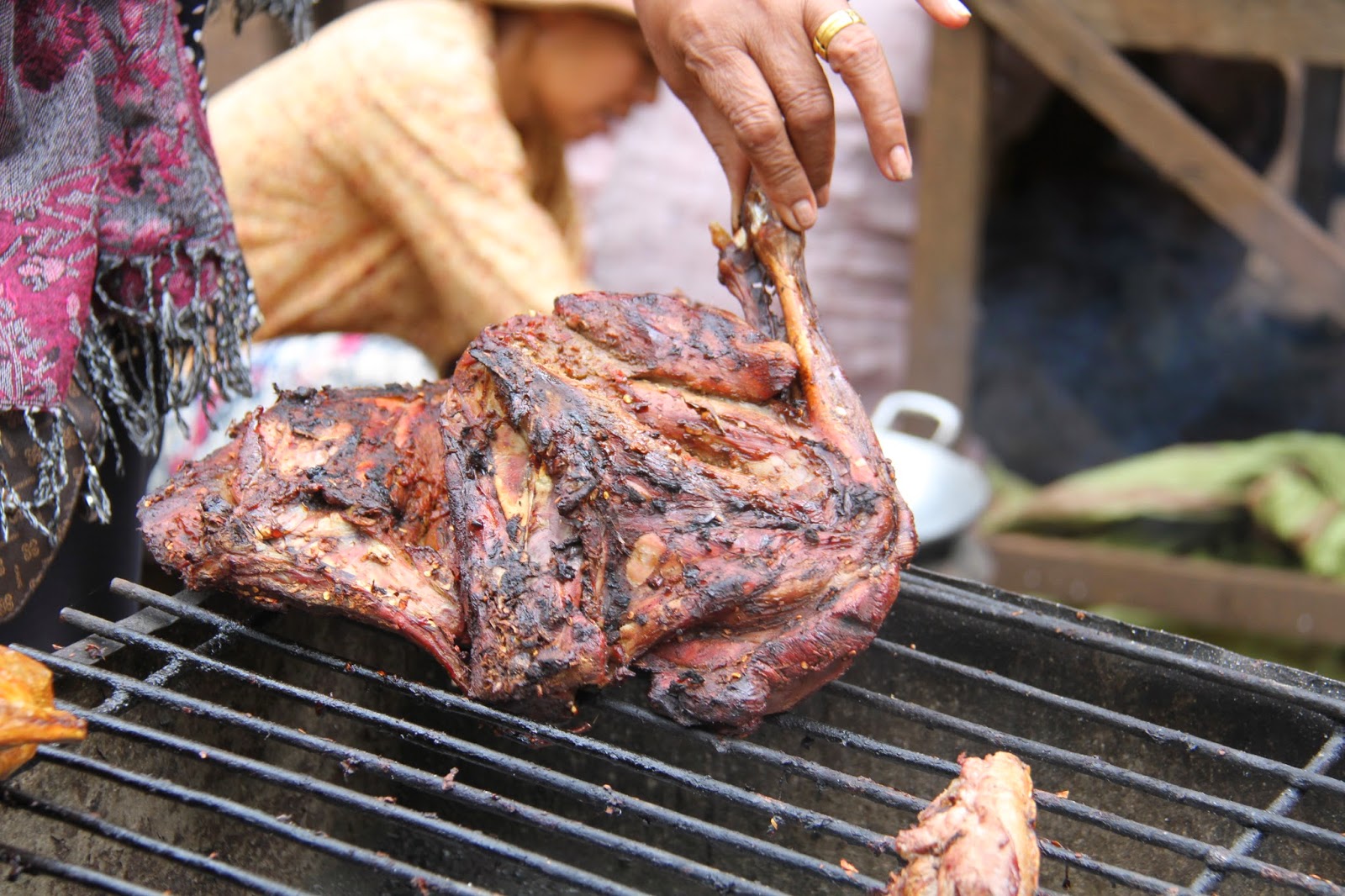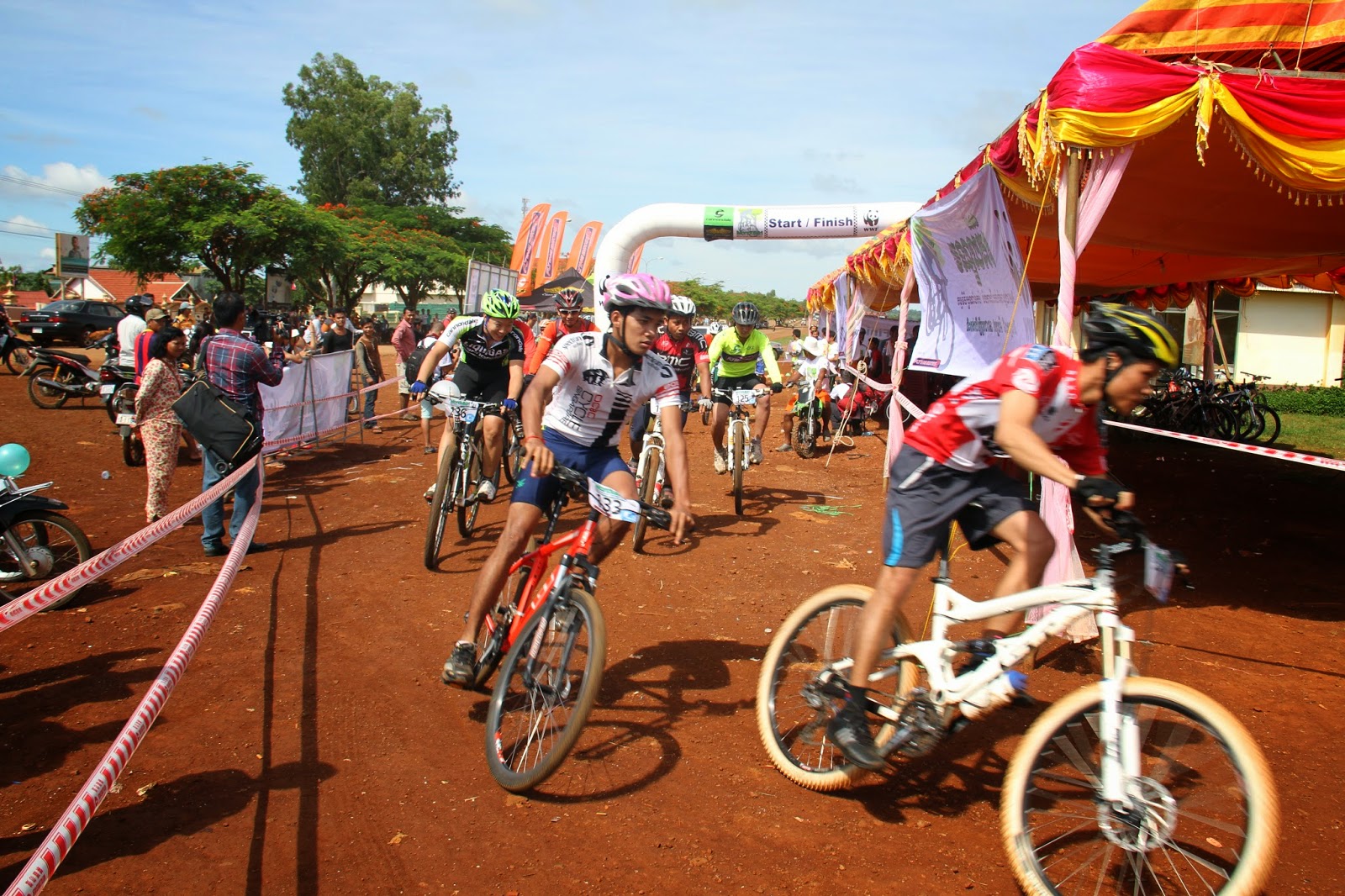Buddhist monks traditionally were called upon to perform a number of functions in Cambodian life. They participated in all formal village festivals, ceremonies, marriages, and funerals. They also might have participated
 |
Cambodian lady offered the food to monk.
Photo by Siveun |
in ceremonies to name infants and in other minor ceremonies or rites of passage. Monks did not lead the ceremonies, however, because that role was given to the achar, or master of ceremonies; the monk's major function was to say prayers of blessing. They were often healers and, in traditional Khmer culture, they were the practitioners whose role was closest to that of modern psychiatrists. They might also have been skilled in astrology. The monk traditionally occupied a unique position in the transmission of Khmer culture and values. By his way of life, he provided a living model of the most meritorious behavior a Buddhist could follow. He also provided the laity with many opportunities for gaining merit. For centuries monks were the only literate people residing in rural communities; they acted as teachers to temple servants, to novices, and to newly ordained monks. Until the 1970s, most literate Cambodian males gained literacy solely through the instruction of the sangha.
After independence from France, young Cambodian intellectuals changed their attitude toward the clergy. In describing a general shift away from Buddhism in the late 1950s and the early 1960s, Vickery cites the early work of anthropologist May Mayko Ebihara and his own observations. He suggests that the Khmer Rouge was able to instill antireligious feelings in younger males because the latter were losing interest in becoming monks even
 |
Cambodian monk raised the banner
against Hun Sen
Photo from Facebook |
during their teenage years, the traditional temporary period of service. The monks themselves had abandoned some of their traditional restrictions and had become involved in politics. At intervals during the colonial period, some monks had demonstrated or had rebelled against French rule, and in the 1970s monks joined pro- government demonstrations against the communists. Anticlerical feelings reached their highest point among the Khmer Rouge, who at first attempted to indoctrinate monks and to force them to pass anticlerical ideas on to the laity. Under the Khmer Rouge regime, monks were expelled forcibly from the wats and were compelled to do manual labor. Article 20 of the 1976 Constitution of Democratic Kampuchea permitted freedom of religion but banned all reactionary religions, that were "detrimental to the country." The minister of culture stated that Buddhism was incompatible with the revolution and was an instrument of exploitation. Under this regime, to quote the Finnish Inquiry Commission, "The practice of religion was forbidden and the pagodas were systematically destroyed." Observers estimated that 50,000 monks died during the Khmer Rouge regime. The status of Buddhism and of religion in general after the Vietnamese invasion was at least partially similar to its status in pre-Khmer Rouge times.
According to Michael Vickery, who has written positively about the People's Republic of Kampuchea, public observance of Buddhism and of Islam was reestablished, and government policies allowed Cambodians freedom to believe or not to believe in Buddhism. Vickery cites some differences in this reestablished Buddhism: Religious affairs were overseen by the PRK's Kampuchean (or Khmer) United Front for National Construction and Defense (KUFNCD), the mass organization that supported the state by organizing women, youths, workers, and religious groups. In 1987 there was only a single Buddhist order because the Thommayut order had not been revived. The organization of the clergy also had been simplified. The sangharaja (primate of the Buddhist clergy) had been replaced by a prathean (chairman). Communities that wanted wats had to apply to a local front committee for permission. The wat were administered by a committee of the local laity. Private funds paid for the restoration of the wats damaged during the war and the Khmer Rouge era, and they supported the restored wats. Monks were ordained by a hierarchy that has been reconstituted since an initial ordination in September 1979 by a delegation from the Buddhist community in Vietnam. The validity of this ordination continued to be questioned. In general, there are only two to four monks per wat, which is fewer than before 1975. In 1981 about 4,930 monks served in 740 wats in Cambodia. The Buddhist General Assembly reported 7,000 monks in 1,821 active wats a year later. In 1969 by contrast, observers estimated that 53,400 monks and 40,000 novice monks served in more than 3,000 wats. Vickery sums up his observations on the subject by noting that, "The government has kept its promise to allow freedom for traditional Buddhism, but does not actively encourage it."
Martin offers another, more pessimistic, view of the religious situation in the late 1980s. In a 1986 study, she asserts that the PRK showed outsiders only certain aspects of religious freedom; she also states that the few wats that were restored had only two or three old monks in residence and that public attendance was low. The monks were allowed to leave the wats only for an hour in the mornings, to collect their food, or during holy days. Lay people who practiced their faith were about the same ages as the monks, and they were allowed to visit the wats only in the evenings. Agovernment circular had also instructed civil servants to stop celebrating the traditional New Year Festival. Some traditional Buddhist festivals still were tolerated, but the state collected a 50 percent tax on donations. Martin believes that Buddhism was threatened externally by state repression and by nonsupport and internally by invalid clergy. She noted that the two Buddhist superiors, Venerable Long Chhim and Venerable Tep Vong, were both believed to be from Vietnam. Venerable Tep Vong was concurrently the superior of the Buddhist clergy, vice president of the PRK's Khmer National Assembly, and vice president of the KUFNCD National Council. She quoted a refugee from Batdambang as having said, "During the meetings, the Khmer administrative authorities, accompanied by the Vietnamese experts, tell you, `Religion is like poison, it's like opium; it's better to give the money to the military, so they can fight'."
Buddhism is still strong among the various Cambodian refugee groups throughout the world, although some younger monks, faced with the distractions of a foreign culture, have chosen to leave the clergy and have become laicized. In the United States in 1984, there were twelve Cambodian wats with about twenty-one monks. In the 1980s, a Cambodian Buddhist wat was constructed near Washington, D.C., financed by a massive outpouring of donations from Cambodian Buddhists throughout North America. This wat is one of the few outside Southeast Asia that has the consecrated boundary within which ordinations may be performed.
Most of the major Cambodian annual festivals are connected with Buddhist observances. The chol chnam (New Year Festival) takes place in mid-April; it was one of the few festivals allowed under the Khmer Rouge regime. The phchun ben, celebrated in September or in October, is a memorial day for deceased ancestors and for close friends. Meak bochea, in January or February, commemorates the last sermon of the Buddha. Vissakh bochea, in April or in May, is the triple anniversary of the birth, death, and enlightenment of the Buddha. The chol vossa takes place in June or in July; it marks the beginning of a penitential season during which the monks must remain within the temple compounds. The kathen marks the end of this season; celebrated in September, it features offerings, especially of robes, to the monks. The kathen was still celebrated in the PRK in the late 1980s.
Cambodian Buddhism exists side-by-side with, and to some extent intermingles with, pre-Buddhist animism and Brahman practices. Most Cambodians, whether or not they profess to be Buddhists (or Muslims), believe in a rich supernatural world. When ill, or at other times of crisis, or to seek supernatural help, Cambodians may enlist the aid of a practitioner who is believed to be able to propitiate or obtain help from various spirits. Local spirits are believed to inhabit a variety of objects, and shrines to them may be found in houses, in Buddhist temples, along roads, and in forests.
Several types of supernatural entities are believed to exist; they make themselves known by means of inexplicable sounds or happenings. Among these phenomena are khmoc (ghosts), pret and besach (particularly nasty demons, the spirits of people who have died violent, untimely, or unnatural deaths), arak (evil spirits, usually female), neak ta (tutelary spirits residing in inanimate objects), mneang phteah (guardians of the house), meba (ancestral spirits), and mrenh kongveal (elf-like guardians of animals). All spirits must be shown proper respect, and, with the exception of the mneang phteah and mrenh kongveal, they can cause trouble ranging from mischief to serious life-threatening illnesses. An important way for living people to show respect for the spirits of the dead is to provide food for the spirits. If this food is not provided, the spirit can cause trouble for the offending person. For example, if a child does not provide food for the spirit of its dead mother, that spirit can cause misfortunes to happen to the child. Aid in dealing with the spirit world may be obtained from a kru (shaman or spirit practitioner), an achar (ritualist), thmup (witch, sorcerer or sorceress), or a rup arak (medium, usually male). The kru is a kind of sorcerer who prepares charms and amulets to protect the wearer from harm. He can cure illnesses, find lost objects, and prepare magic potions. Traditionally, Cambodians have held strong beliefs about protective charms. Amulets are worn routinely by soldiers to ward off bullets, for example. The kru are believed to have the power to prepare an amulet and to establish a supernatural link between it and the owner. A kru may acquire considerable local prestige and power. Many kru are former Buddhist monks. Another kind of magical practitioner is the achar, a specialist in ritual. He may function as a kind of master of ceremonies at a wat and as a specialist in conducting spirit worship rituals connected with life-cycle ceremonies. Rup arak are mediums who can be possessed by supernatural beings and communicate with the spirit world. The thmup are sorcerers who cause illnesses.
Fortunetellers and astrologers—haor teay—are important in Cambodian life. They are consulted about important decisions such as marriages, building a new house, or going on a long journey. They are believed to be able to foretell future events and to determine lucky or unlucky days for various activities.
Villagers are sensitive to the power and to the needs of the spirit world. According to observations by an American missionary in the early 1970s, villagers consulted the local guardian spirit to find out what the coming year would bring, a new province chief held a ceremony to ask the protection of the spirits over the province, and soldiers obtained magic cloths and amulets from mediums and shamans to protect them from the bullets of the enemy. Before embarking on a mission against enemy forces, a province chief might burn incense and call on a spirit for aid in defeating the enemy. Examples of Brahman influences were various rituals concerned with the well-being of the nation carried out by the ruler and the baku (a Brahman priestly group attached to the royal court). These rituals were reportedly stopped after Sihanouk's ouster in 1970 (see The March 1970 Coup d'État, ch. 1).
















































